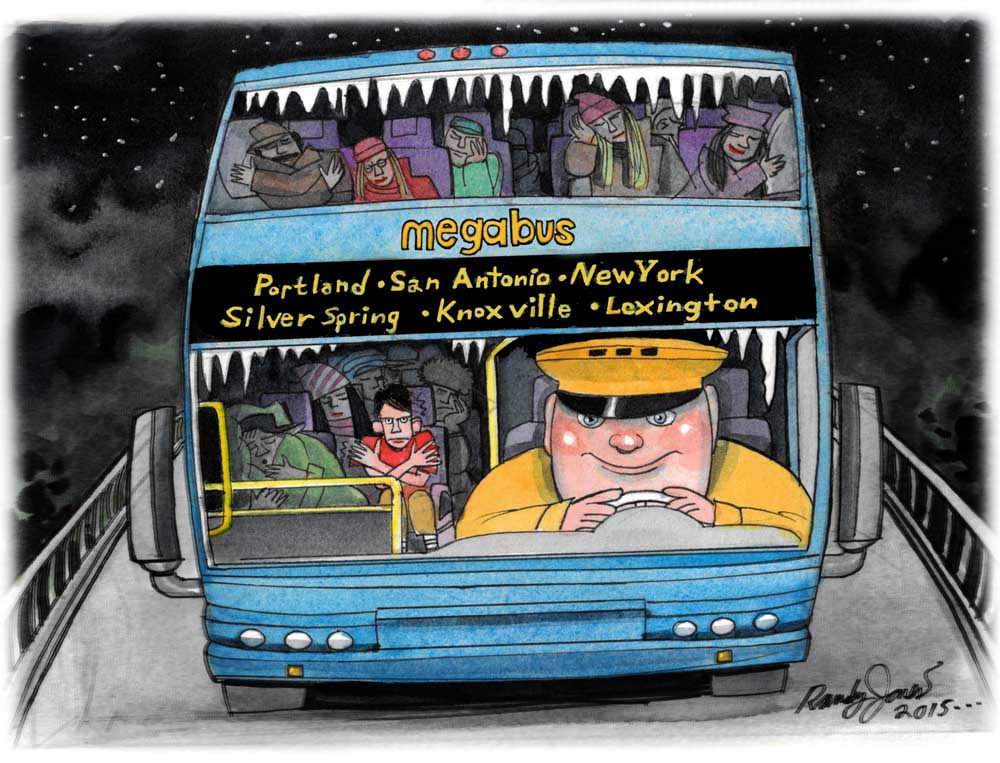The pros and (considerable) cons of budget bus travel
Published 12:00 am Sunday, July 26, 2015

- Randy Jones / The New York TimesWith a few adjustments, like dressing for the powerful AC and using long layovers to your advantage, traveling by Megabus can work.
Tickets for the discount bus company Megabus start at $1, plus some pesky fees. Its routes connect dozens of U.S. cities from Maine to California (along with more in Canada). Many routes run overnight, meaning you can save on lodging, if you’re up for brushing your teeth at highway rest stops.
So, is Megabus the cheapest way to see America? Couldn’t you ramble through more than half the country for a month, hitting, say, 10 cities for less than $25?
After a weeklong, six-leg trial (five of the legs with Megabus), my conclusion is: sort of. You’ll rarely get that $1 fare; capturing those prizes requires constant social-media monitoring. The seats are extremely difficult places to sleep. Most inconveniently, the routes often don’t connect in the way you want them to.
With a few adjustments and concessions, it can work. Most important, use the long layovers to your advantage.
My plan was to go from New York to Silver Spring, Maryland (via Peter Pan, not Megabus, which does not stop in Silver Spring). A few hours later, I’d catch the Metro to Union Station in Washington for Megabus’ overnight bus to Knoxville, Tennessee, spending a day and evening there. Then I’d catch a 1:30 a.m. bus to Lexington, Kentucky, arriving at 5 a.m., to start a four-day bike trip. The way back worked out with shorter stops and just one overnight.
The first leg to Silver Spring was a breeze; at $18 it was the most expensive leg, but worth it — dropping me off, by the way, about two minutes from the tasty and affordable Lotus Cafe. Later that evening, I hopped on the Metro to Union Station for the bus to Knoxville.
I should not have been surprised that my upper-deck seat to Knoxville was barely cushioned and quite tight. Still, the bus was clean, the driver upbeat and friendly considering the task before her, and the bathroom functional. But an unpleasant surprise was in store for anyone who came unprepared. By which I mean me.
As we boarded, most passengers broke out pillows and heavy blankets and comforters, as if we were going on an Arctic expedition. I scoffed at their packing inefficiency.
Then came an odd announcement. “This bus is climate-controlled,” said the driver, “which means we cannot control the AC or the heat. Send your comments to megabus.com.”
It was a pre-emptive strike against passenger mutiny, as the bus was soon frigid. I did get one welcome break from a sleepless, shivering night — a 3:45 a.m. stop at Love’s Travel Stop, somewhere in western Virginia.
If you’ve been to Love’s, you know what awaited me. A woman from the bus spotted me eyeing the two-for-$3 Tornados, greasy meats and cheeses rolled up in crispy crusts (or in blueberry pancakes!). Embarrassed I had been spotted considering such a purchase, I slipped away.
A few minutes later, I went back and grabbed one pizza Tornado and one blueberry-pancake-and-sausage Tornado.
The trip back looked to be smoother, but the bus conked out on I-75, near Conway. We were stuck for more than three stuffy hours. But we got a refund for that leg, I made my connection in Knoxville and by early afternoon the next day I was back in New York.
My conclusion: Megabus as a cheap way of getting from Point A to Point B is great, if you are doing a short route or are strapped for cash. Megabus road trips as leisure travel? That’s an off-label use prescribed for a specific type of person: the truly flexible, comfort-be-damned, all-out budget traveler. Who has room in his bag for a blanket and pillow. And a stomach capable of digesting a 3 a.m. blueberry-pancake Tornado.






